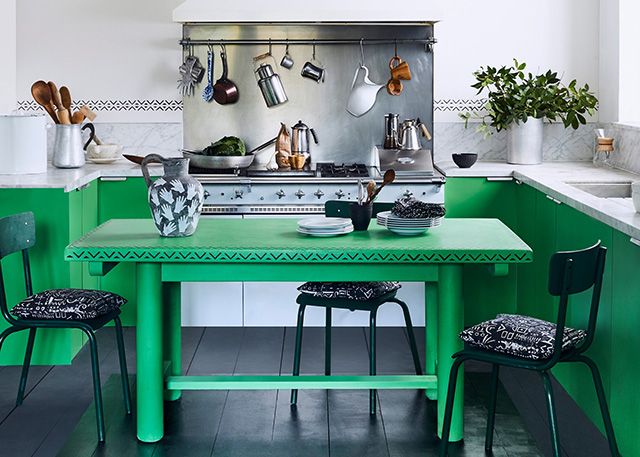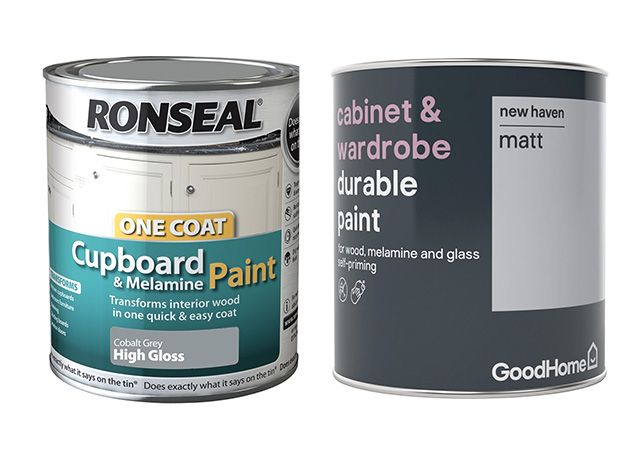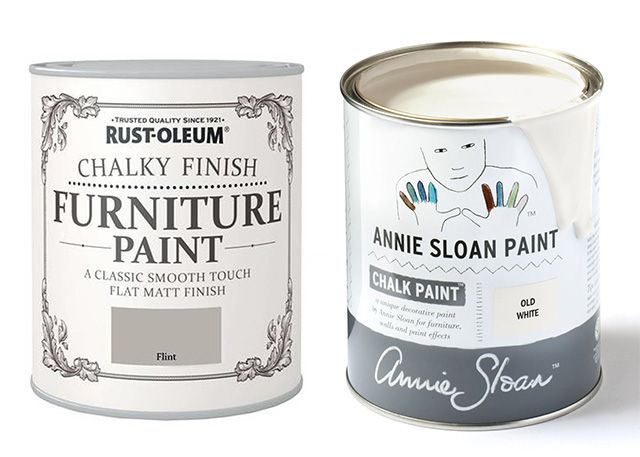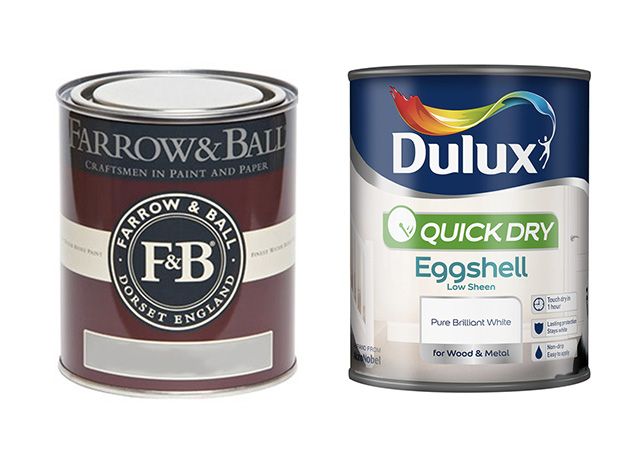
Top tips for painting kitchen cabinets (+ which paint to buy)
A new lick of paint can be all that’s needed to completely transform your kitchen. Get the best results by following these golden rules.
(This post contains affiliate links, from which we may earn a commission)

Image: Annie Sloan
A tired, dated kitchen can be a big, expensive job to replace, but sometimes a fresh coat of pant is all that’s required in the short term to make your space for liveable.
However, it’s important to be realistic about a DIY kitchen makeover with paint – you’ll have best results with real timber doors, not melamine, which will be more prone to chipping after painting – though it’s not the end of the world, and may be easy enough to patch up if this does happen.
Also make sure you give yourself enough time to complete the job properly – it can be a labour intensive job and you’ll need to give the doors multiple coats for the best results.
Before you get started, take a look at these golden rules to ensure the final result is deserving of your stylish new kitchen.
Clean before you paint
Kitchens are particularly prone to collecting grease, which will affect how well your paint adheres to their surface, and may even cause stains and marks to bleed through the paint. Use a cleaning product with a degreasing quality to get the doors clean as possible to start
Remove doors and label the up
Taking the doors off the cabinetry will make painting much easier, and also more precise. This will help you get nice even coats of paint, and allow you to get into every corner and side with ease.
If you do take your doors off, be sure to label which cabinet they were from, or you may be in for some serious trial and error trying to put your kitchen back together. Why not keep all hinges and screws in a labelled freezer bag too for safekeeping?
Sand for better paint adherence
Sanding your doors is not something you should skip, even if you’re using a primer. However, you’re not sanding off all of the existing paint – you’ll just need to key the surface with a medium grade sandpaper to ensure your new paint sticks the best it can.
Make sure to vacuum after sanding, and it can create very fine dust that’s hard to see, but that will affect your paint job.
Prime for success
Priming your doors is a good idea – not only will it help your actual door paint (which is usually more expensive) go a bit further by creating a base to paint onto, it will also help avoid problems such as knots in the wood showing through. It does add an extra step into your project, but it’s well worth the effort.
Read more: Painting your home: 5 common myths debunked
Wait for paint to dry
Paint with your choice of roller or brush, elevating the doors on props to paint for ease. Once finished, you’ll need to wait until the paint is fully cured, not just touch dry, before putting them back on. This will help avoid any paint chipping off when handling, as re-attaching the hinges and putting back into the cabinetry is not always the most dainty of jobs.
Which paint to buy?
You’ll need to choose a paint that’s suitable for wood, but also one’s that’s wipeable – easy to clean is a must for the kitchen! Think
Traditionally oil-based paints have been used where the finish needs to be durable, however, with a growing focus on air quality and the harmful effects of VOCs, we suggest sticking with a water-based paint.
Cupboard and melamine paint

Buy GoodHome cabinet and wardrobe paint from B&Q
Buy Ronseal cupboard and melamine paint from Amazon
This kind of paint appears to be a no-brainer – as its specifically formulated for the task at hand. However, be mindful that there may be less colour availability in these kinds of paints, and that the job can still be done with other ranges.
Furniture and chalk paint

Buy Annie Sloan Chalk paint from Annie Sloan
Buy Rustoeleum Chalky finish furniture paint from Amazon
Chalky furniture paint will give a modern, matt finish to your cupboards, but it doesn’t tend to be wipeable on its own, so you’ll certainly have to wax for a functional finish in a kitchen.
Satin, eggshell and gloss

Buy Dulux Quickdry Eggshell paint from Amazon
Buy Farrow & Ball Eggshell paint at B&Q
The rule of thumb with paint is that often, the glossier the finish, the easier it is to wipe clean. Gloss paints tend to be considered old fashioned, however, but eggshell and even some satins can stand up to the job for a kitchen. If you’re concerned about a hardwearing finish, you could also use a clear matt lacquer to seal your doors and help your paint job last a lot longer.
Considering painting your kitchen cupboards? Tweet us @goodhomesmag, post a comment on our Facebook page or tag us in your finished projects on Instagram.




